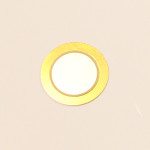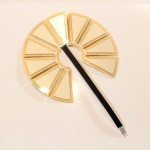A trigger is an electronic transducer that can be attached to a drum, cymbal or other instrument to enable it to control an electronic drum unit or similar device.
Specialised triggers are produced for specific instruments. A snare drum trigger, for example, needs two channels, one each for the rim and head, while a tom-tom drum trigger needs only to register strokes to the drum head.
Pintech works with 2 types of triggers:
- Pintech Piezo Trigger
- Pintech Membrane Trigger (For Bell)
When a piezo trigger is hit, a small amount of voltage is produced and sent to the trigger input of the drum module. The harder the pad is hit, the larger the amount of voltage is produced; usually maxing out at around five volts. The volume of the sound the drum module plays is directly related to the voltage produced by the pad. The higher the voltage, the louder the sound produced.
A membrane switch is used in our cymbals, for both the bell trigger and the edge trigger/choke. Membranes are a pretty simple concept: 2 very thin pieces of metallic material are separated at rest, but make contact when pinched or pressed. When both pieces of metallic material touch each other, it makes a connection. Membrane switches are normally tied into a piezo in one way or another to communicate with the module. There are many different ways to wire up a dual zone cymbal or triple zone cymbal.



